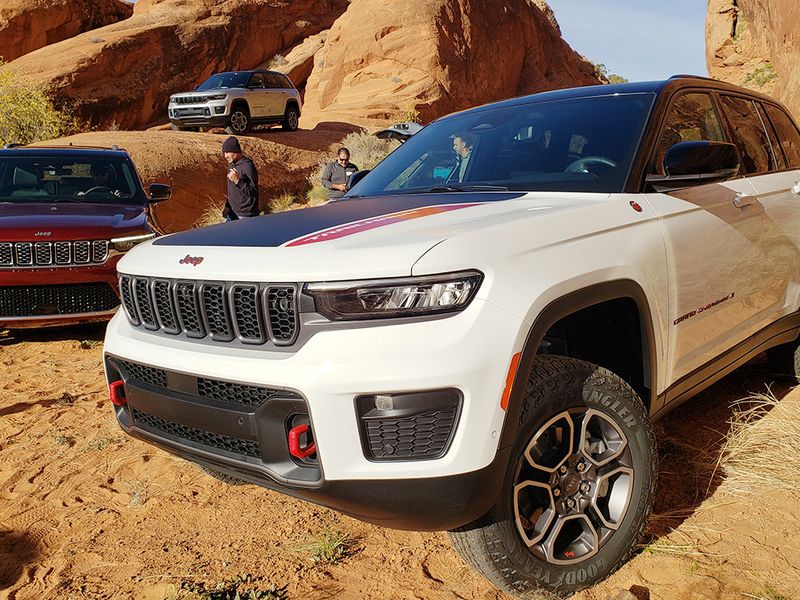
MOAB, Utah — Designers working on the fifth-generation Jeep Grand Cherokee didn’t want to reinvent the wheel.
They chose to refine it and build upon its legacy, said Mark Allen, Jeep brand’s head of exterior design.
But there was a new challenge because they had to craft designs for a traditional two-row model, which arrives at dealerships by year end, as well as the nameplate’s first three-row variant, which is already on sale.
Allen, 58, spoke with Staff Reporter Vince Bond Jr. at a media event here for the redesigned two-row Grand Cherokee. He discussed juggling the two-row and three-row designs and the approach to the Grand Cherokee 4xe, a plug-in hybrid due in early 2022. Here are edited excerpts.
Q: With the new platform, were you tempted to do something totally different with the design?
A: No. Grand Cherokee, to me, has to be a refinement of the car. Grand Cherokee means so much to us. It doesn’t need to be blown up. It’s not broken, doesn’t need to be a complete redo. It’s a building-upon-a-legacy thing.
The size of it is something we protect really closely. Hopefully, the customer benefits from the growth and the packaging in the second row, but it still fits in the garage. The Summit [trim], which is a full-on luxury vehicle, and the Trailhawk, which is off-road centric, they couldn’t be farther apart from each other, but they’re made from the same basic guts. Having the car grow in one way in the more premium side of the segment and also be better off-road, that’s a hard thing to balance. I credit [former Fiat Chrysler Automobiles CEO] Mike Manley, who was always the guy pressing us to do more and more capability off-road but also pressing that we need more premium in the vehicle.
How do you design a vehicle that looks good but still has off-road capability?
The clues are all there for us. Grand Cherokee, there’s a lot of heritage put into design, but it’s never a retro design. Adding the L three-row was actually a tricky thing to do. My favorite feature of the car is honestly the front end. I don’t do mean or angry front ends, but it has a confident look to it.
The Grand Cherokee two-row, the L and even the Grand Wagoneer have a family look. Is that by design?
Yes. The Wagoneer was based on a vision model we did in 2016. The hallmark of that was the exposed pillars [and] very vertical lines. But it has very much a Jeep feel to the face of it. But also we’re trying to break off and give the Wagoneer its own things.
How did you make the body extension of the Grand Cherokee L look natural?
We worked hard at it. Sharing from the B-pillar forward, sharing that sheet metal with a longer vehicle is not easy. You’ve got to build both cars side by side. Imagine taking a curved line and making it longer; that’s hard to do. And I think we pulled it off. It doesn’t look grotesquely long. But we also managed to make that third row a nice place to live.
Are there any big design differences between the Grand Cherokee 4xe and the conventional version?
There’s not, other than changing some of the colors to signal to people. We did that on Wrangler; the 4xe really looks like a Rubicon, but instead of red tow hooks, they’re blue. The brand wanted it to shout, “I’m a PHEV.” We were after something that was a bit more subtle. We won in the end, and they acquiesced and said, “Yeah, that’s probably the right way to go.”
Why was that important to you?
There have been vehicles that have been electric or PHEV and they try to visually express that, and then there’s other vehicles that are electric and they’re just a cool-looking car that happens to be electric. That’s really more where I want to be. I don’t want to be some dorky electric car. I want to be a car that’s very cool, very attractive and happens to be very efficient.

